Defence Sites: Heritage and Future 2012
1st International Conference on Defence Sites: Heritage and Future
6 - 8 June 2012
Portsmouth, UK
Overview and Opening Address
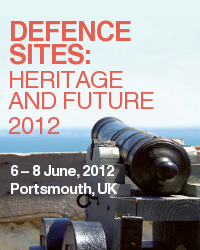
The First International Conference on Defence Sites, Heritage and Future (Defence Heritage/2012) took place in Portsmouth, UK. The Meeting was chaired by Dr Celia Clark and Professor Carlos A. Brebbia, both of the Wessex Institute of Technology.
Redundant defence sites offer a range of opportunities to planners, architects and local communities to redevelop large areas, bringing new life to often neglected parts of town. The opportunities are common to many countries and the papers presented at the conference stressed this common feature and helped to share experiences of the transformation of defence sites to civilian uses around the world.
The conference objective was to raise the knowledge of the scale, design and functions of defence sites. It brought a better understanding of the issues raised by the redundancy and implications of different disposal processes for the land.
The re-use of defence sites also raises questions regarding the need to recover brownfields and contaminated land which can have far-reaching legal responsibilities and environmental consequences.
Another aim of the conference was to discuss the need to achieve sustainable development which involved issues related to maintenance, conservation, as well as built and natural environmental controls, while responding to the needs and aspirations of the community.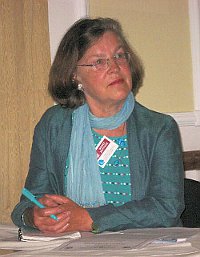
Although the Conference programme, Carlos said, is one of the most important activities of WIT among its many initiatives, WIT also has a series of Research Divisions that work in collaboration with partners all around the world dealing with advanced research activities for industry. An essential part of this work is the impact of the PhD studies carried out on WIT’s Campus in the New Forest.
Celia Clark explained the significance of Portsmouth and its rich naval history. Portsmouth is associated with the Navy from the time of Henry VIII’s Mary Rose ship to the modern British Navy.
David Davies was the key speaker at the Conference. He is a well-known author of fiction and non-fiction, Chairman of the Royal Dockyards Society and Vice President of the Navy Historical Society. David is a Fellow of the Royal Historical Society and winner of the prestigious Samuel Pepys Prize. He advises the Dockyards Society on heritage issues in the UK and overseas. He described several interesting case studies dealing with good and bad renovations of heritage sites.
Conference Sessions
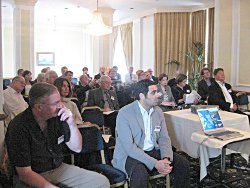 The conference presentations were divided into a series of sessions, with the following headings:
The conference presentations were divided into a series of sessions, with the following headings:
- Military heritage history
- Castles and fortifications
- Risk assessment
- Simulation and modelling
- Case studies
- Transition from military to civilian life
- Community involvement
Invited Presentations
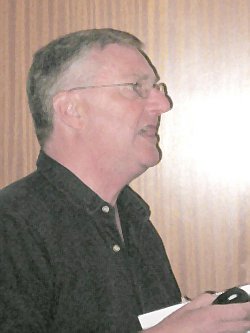
- “The naval dockyards society: the first fifteen years” by J.D. Davies
- “Structural assessment of heritage buildings” by M. Holicky, Czech Technical University of Prague, Czech Republic
- “Reinventing the Brooklyn Navy Yard: a national model for sustainable urban industrial job creation” by D. Romano, Brooklyn Navy Yard Development Corporation, USA
- “Learning from experience: defence disposals in the UK contrasted with sustainable redevelopment in four US east coast navy yards” by C.M. Clark
- “Present-day problems with historic innovations” by P. Lambert, Mott McDonald Materials and Corrosion Engineering, UK
- “Fighting for a military site: the work of Farnborough Air Science Trust (FAST)” by L.D. Peskett, FAST, UK
- “Transforming Heritage: communities old and new. Aldershot urban extension.” by R. Adam, ADAM Architecture, UK
- “National Heritage protection plan and the Wiltshire pilot project on disposals” by W.Holbrow, English Heritage Government Historic Estates Unit, UK
- “Forces for good: making the most of military land for public benefit” by S Bagaeen, University of Brighton, UK
- “Sea forts around the UK, their history and re-use (the example of Portsmouth) – a local authority perspective” by B Cracknell, Portsmouth City Council, UK.
Portsmouth Historic Dockyard
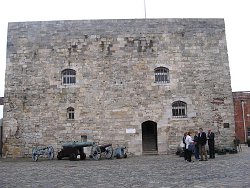
HMS Victory This famous 104 gunship of the Royal Navy was launched in 1765, and is renowned as Lord Nelson’s flagship at the Battle of Trafalgar which took place in 1805. In 1922 HMS Victory was moved to a dry dock in Portsmouth and is now preserved as a museum, although she also continues to be the flagship of the second Sea Lord. It is the oldest naval ship still in commission.
HMS Warrior It was the first armour-plated warship of the Royal Navy which was completed in 1861. At the time, Warrior was the largest and fastest armoured warship of the Royal Navy. She was withdrawn from service in 1883 and has been painstakingly restored in the last few decades.
Mary Rose The dockyard is also home to the Mary Rose, the ill-fated flagship of Henry VIII which capsized and sank in the Solent waters when being sent to fight the French. Some of the artefacts from this historic ship are on display in the Mary Rose Museum within the Dockyard.
The Naval Museum of the Royal Navy covers the Navy’s diverse history over the centuries and includes exhibits such as the life mask taken from Nelson’s face in 1805, the first Victoria Cross Medal awarded in 1856 and a World War II enigma machine which helped win the Battle of the Atlantic, along with many other exhibits.
Social Occasions
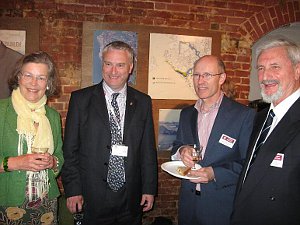
The Conference banquet took place in the Royal Southampton Yacht Club, where they had occasion to see some of the major developments that had taken place in the old port, giving rise to one of the best marinas in the country. The excellent dinner was accompanied by good wines, giving rise to a friendly atmosphere. At the end of the dinner, Carlos said a few words, thanking the participants for taking part in the event. Participants were given as a souvenir a piece of pottery made by a local artist.
Conference Proceedings
The proceedings of Defence Sites: Heritage and Future, 300pp (Print ISBN: 978-1-84564-590-8, eISBN 978-1-84564-591-5) are available from WIT Press. Orders can be placed on the WIT Press web site at www.witpress.com or by email: This email address is being protected from spambots. You need JavaScript enabled to view it., telephone: +44 (0) 238 029 3223 or fax: +44 (0) 238 029 2853.Papers from the conference will also be hosted online at the WIT eLibrary as Volume 123 of WIT Transactions on the Built Environment (ISSN: 1746-4498, Digital ISSN 1743-3509). For more details visit the WIT eLibrary at http://library.witpress.com


 Wessex Institute
Wessex Institute